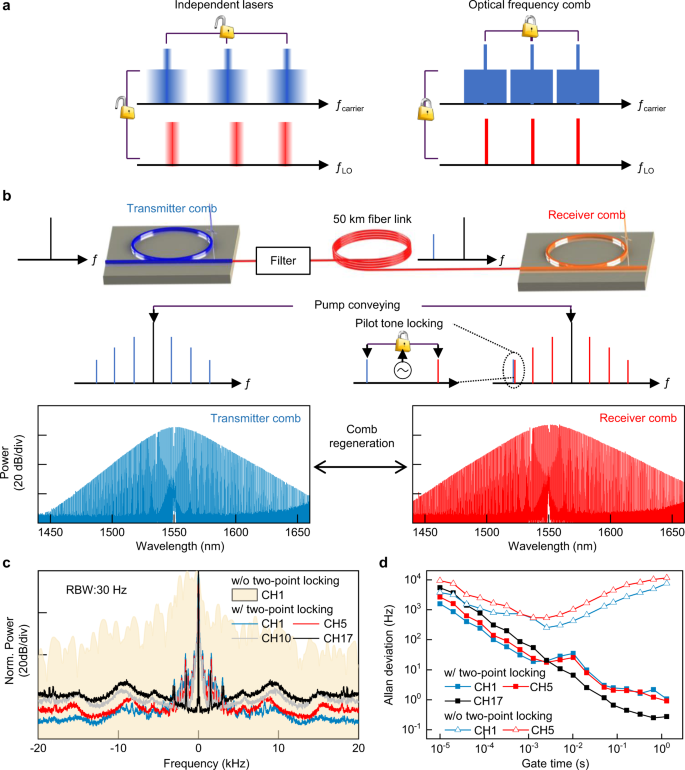Recently, Professor Kun QIU's team from our school, in collaboration with Professor Qiang ZHOU and Professor Guangwei DENG's team from the Institute of Basic and Frontier Research, published a research paper titled "Coherent optical communications using coherence-cloned Kerr soliton microcombs" in the prestigious international journal Nature Communications. Dr. Yong GENG, a postdoctoral researcher guided by Professor Kun QIU, served as the first author of the paper, and Associate Professor Heng ZHOU from the School of Information and Communication Engineering acted as the corresponding author. The work presented in the paper received support from key research and development projects of the Ministry of Science and Technology, the National Natural Science Foundation, and the Spark Program for Basic Research at our university, etc.
The integration of multi-wavelength light sources is crucial for wavelength-division multiplexing (WDM) optical communication systems. In recent years, the Kerr optical frequency comb technology based on optical microresonators has emerged, offering the possibility of achieving high-performance on-chip integrated WDM light sources. This has garnered significant attention from both the academic and industrial communities. In this paper, the authors employed on-chip integrated Kerr optical frequency combs as multi-wavelength carrier combs for data transmission and multi-wavelength local oscillator combs for data reception. Through innovative techniques such as pump transfer, two-point locking, and optical frequency division, they achieved frequency and phase locking between the carrier comb and local oscillator comb. Under the condition of a 50 km separation interval, the beating linewidth between multiple carriers and the eigenfrequency was <100 Hz, significantly reducing the complexity of frequency estimation and phase compensation algorithms in coherent optical communication. This technology is expected to promote the evolution of frequency granularity in WDM optical communication systems from GHz to Hz levels, providing a potential solution to the "power consumption crisis" currently faced by optical communication systems. It is also anticipated to be applied in areas such as long-distance time-frequency transfer and dual-field quantum key distribution. Currently, the research team is collaborating with leading industry enterprises to explore the practical applications of these technologies.
Professor Kun QIU's optical communication research team is primarily engaged in fundamental and applied research in integrated photonics, optical transmission and access, and specialty optical communication. Through in-depth collaborations with renowned domestic and international universities and enterprises, the team has achieved substantial research outcomes. They received a second-class National Technical Invention Award in 2015 and have published over 100 papers in journals such as Nature Communications, Light: Science and Applications, Laser & Photonics Reviews, and Physical Review Letters, etc. The team has also taken the lead in completing major research projects funded by the Ministry of Science and Technology and the National Natural Science Foundation.
[Link to the paper: https://www.nature.com/articles/s41467-022-28712-y]
